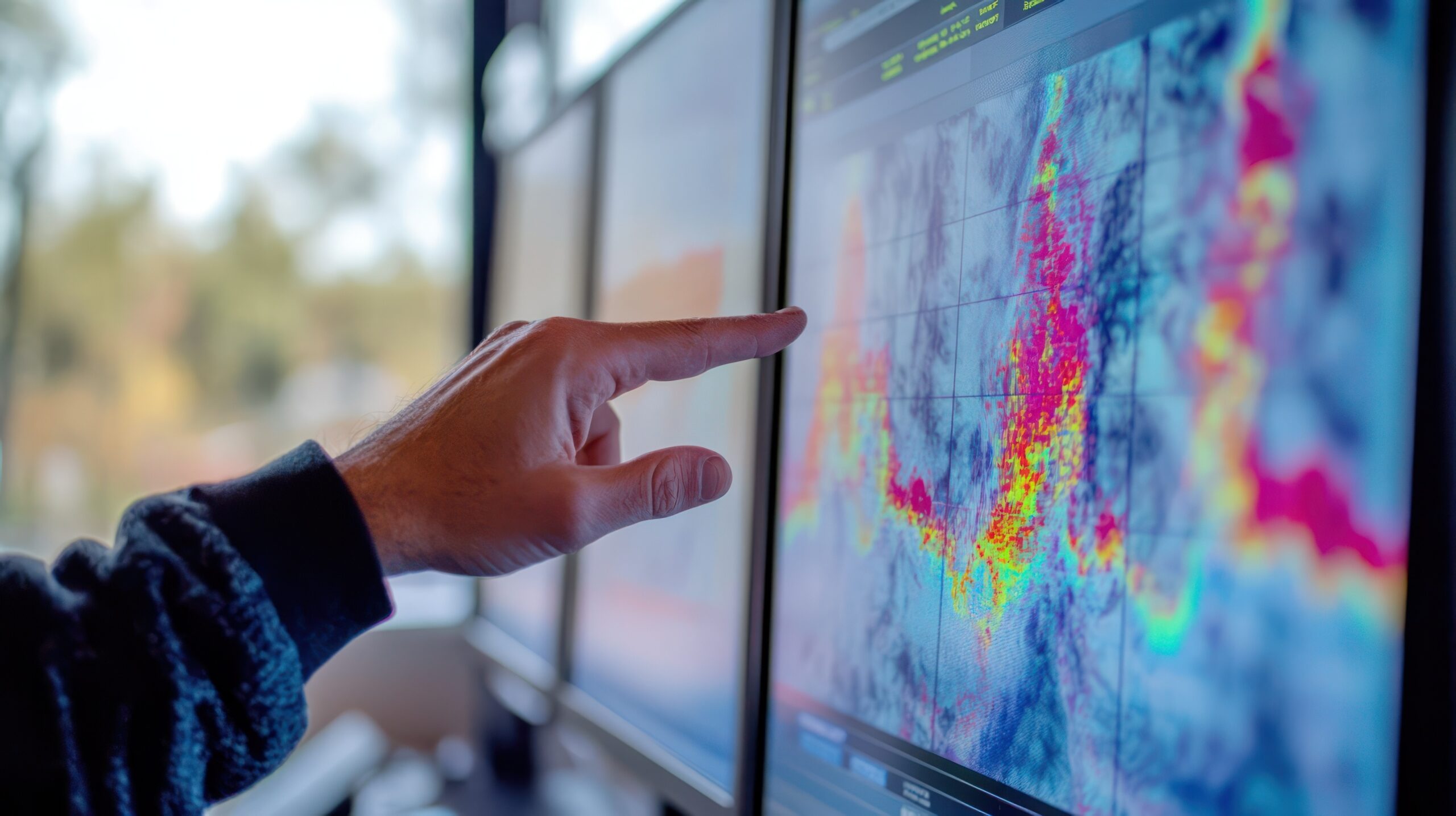Weather intelligence for the future: Crafting a strategic enterprise approach to changing environmental conditions
Continue readingPositive and negative biases have an impact on the decisions we make. Many of these biases are unconscious, but with the evolution of advertising technology, they can become embedded in our tools and systems.
Technological bias happens when human biases are (often unknowingly) encoded into technology, which then has the capacity to scale the bias at a systemic level and potentially amplify the bias of a small group of people.
As an industry, we need to be aware of how these biases affect our society, our organizations, and the work we produce in order to optimize advertising campaigns and use consumer data ethically.
In this article, we’ll discuss advertising bias, how it impacts brands and consumers, and how AI can help us spot and mitigate bias to improve advertising fairness and campaign effectiveness.
What is advertising bias?
Advertising bias relies on assumptions, instead of objective truth, to carry out campaigns. Although marketers try to avoid preliminary judgments in their decision-making, it can be a difficult task to achieve.
Additionally, advertising technology tools are created and trained by people who have their own unconscious biases. These tools then influence who the campaign targets, and can cause certain groups to either be advantaged or disadvantaged over others.
The state of bias in advertising
As the industry increasingly relies on tools to automatically segment audiences and run campaigns, more and more decisions are being made by machines. Marketers using AI technology strive to remain objective in their decisions. However, as the Federal Trade Commission noted1, machine learning can result in bias and discrimination against marginalized groups. Companies are forced to look into their own datasets to determine what is being collected. For example: Analyzing which users click an ad is only a fraction of the intended audience.
CMOs often lack insight into how these algorithms are working and what biases may be built into the models. Decisions are then sometimes made via unintentional signals (like age, race, or gender) which introduce bias to the campaign. For CMOs looking to scale their marketing efforts, addressing bias is an important concern.
An added problem with advertising biases is that marketers are often unaware of their impact on consumers, advertising campaigns, and their brands.
Surprisingly, even though bias in advertising has the potential to negatively impact brands and consumers, 23 of interviewed execs say they have no plans to develop policies for the ethical use of consumer data and 32% are not sure of their plans2.
However, many companies are beginning to question how they can create greater equity, inclusion, and authenticity in their organizations; addressing advertising bias is key to achieving these goals. In order to combat bias, companies will need to take an organization-wide approach.
What are examples of bias in advertising?
Advertising bias, or any technological bias that is unknowingly encoded into an algorithm that then affects its decision-making, can be caused by several types of human bias. Each of these biases can affect campaigns in different ways.
The major categories of bias in advertising include:
Unconscious bias
Also known as implicit bias, this is when people unconsciously attribute stereotypes to certain groups of people. People are often completely unaware of these biases, but they can have a significant effect on their decision-making and behaviors. These biases can be especially challenging since people aren’t consciously aware of them. Below are three types of unconscious biases.
Racial bias
Racial bias includes assumptions people have about individuals belonging to a different ethnicity or race. Jennifer Eberhardt, a Stanford University psychologist, has been conducting experiments to uncover this form of unconscious bias. In one of her studies3, 10 white and 10 black study participants were instructed to look at different faces. The MRI machines lit up more when the participants saw members of their own race. At the end of the experiment, these participants had difficulty remembering the faces of people from the opposite race.
These unconscious biases can have implications for how AI algorithms and machine learning tools are developed. One study by Science noted that algorithms were less likely to refer black people than white people to healthcare programs, even if both demographics were equally sick4.
For advertisers, creative and targeting are important to consider when launching campaigns. Ads and advertising technology rooted in stereotypes or unconscious bias are harmful to communities and can have negative implications for campaign performance.
Gender bias
According to a report done by the UN, no country has yet achieved gender equality. Almost 50 percent of people surveyed believe that men are better suited for leadership positions in politics, and in advertising specifically, about 71% of creative directors are men5.
Gender bias affects the commercials and ads consumers interact with, and can impact decisions made under the surface by advertising technology and algorithms. Between 1980 and 2010, women were depicted at work only 4% of the time5. These biases can lead to harmful representations and make audiences feel disconnected from your brand.
Ageism
According to a recent study, survey participants felt that advertisers displayed those aged 55+ in an unfair light6. The consumers noted that ads tend to showcase a mental decline, weakness, or a lack of understanding for technology. However, many people in this demographic would be strong target customers for brands, if companies could learn how to better connect with them. Companies that employ stereotypes in their advertising will push potential prospects away from doing business with them.
Statistical bias
Statistical bias showcases data with misleading results due to an inaccurate representation. For example, if marketers want to gain insight into car owners, but only gather information on those who drive luxury cars, they will have an incomplete data set. If statistical bias occurs, the information will not be representative of the demographic at large and will cause inaccurate and inefficient decisions to be made.
In an article from the Association of National Advertisers (ANA) it is argued that the data which marketers rely on is often incomplete and biased7. Data is collected in a variety of manners, often missing information, which can lead to decisions based on incomplete findings. Algorithms may only include samples of the data when presenting information, favoring specific populations over others due to constraints in collecting data.
Cognitive bias
Cognitive biases are errors of judgment that are caused by unconscious psychological mechanisms. Many cognitive biases are caused by mental shortcuts that the brain uses to make quick decisions. Below are some examples of cognitive bias:
Confirmation bias
Confirmation bias is one of the most well-known cognitive biases and is when people focus on information that confirms their preexisting beliefs while ignoring any information that goes against them.
In an experiment by Hugo Mercier and his European colleagues, study participants were given a series of questions. They were allowed to change their answer if they caught mistakes in their thinking. Only 15% of the participants changed their answers.
Later, they were shown their answers again alongside someone else’s. However, these were mislabeled. About 50% of the participants realized the switch. 60% of those who didn’t realize the change were more critical of their answers than they had been before8.
Exposure bias
People are also more likely to like a product the more often they are exposed to it. In The Like Switch, a former FBI agent notes that proximity matters when trying to create rapport with another person. Exposure can influence how people perceive a person, product, or service.
Systemic bias
Systemic bias, also known as institutional bias, includes organizational policies, laws, or practices that cause discriminatory effects against particular social groups. These biases occur in almost every type of institution.
Often when people think about bias in advertising it’s the types of bias described above that come to mind, there is one more bias that needs to be considered when running advertising campaigns that work with data and algorithms: technological bias. Technological bias happens when human biases are (often unknowingly) encoded into technology, which then has the capacity to scale the bias at a systemic level and potentially amplify the bias of a small group of people. As the advertising industry increasingly relies on platforms that automatically segment and select audiences, deliver offers, and optimize creative, more critical decisions are being made by machines, making it absolutely critical that we identify and mitigate bias in the adtech systems that power our entire ecosystem.
The impact of bias in advertising
Bias in advertising has the potential to negatively affect consumers, increase liability for brands, and reduce the effectiveness of campaigns.
For example, imagine a marketer running a broadly targeted campaign using modern marketing tools to gauge responses across several market segments. If the campaign sees early engagement from one demographic, it may overcompensate and increase campaign activity for that segment. This overcompensation may mean that other potentially responsive audience segments get neglected or may miss the ad campaign completely. Bias in advertising can also lead to inaccurate representation of your target audience, damaging the customer relationship.
How to spot and avoid bias in advertising: 4 steps
As advertising technology evolves, every organization should take steps to learn how bias works and how it can affect their employees, brand, and consumers.
There are four steps to spotting and avoiding bias in advertising:
1. Gain a better understanding of the technologies employed
The first step is to develop an understanding of how unintended biases enter the ML and AI models used to inform advertising strategies. Marketers need to fully understand the tools that they use and how bias can affect their strategies, audiences, and brands.
2. Balance both advantaged and disadvantaged groups
Research shows that bias often results in both advantaged and disadvantaged groups. Balancing these groups (with the help of available solutions, outlined below) could help optimize the campaign to create engagement across a broader subset of the audience, resulting in more conversions.
3. Go beyond typical campaign reporting
If outcomes are unquestioned, potential biases will be unchallenged and continue to impact your brand and consumers. To understand why certain subgroups are performing better or not, they need to be more deeply analyzed to discover hidden biases. Typical campaign reporting likely will not consider the possibility of machine-enabled biases.
4. Initiate mitigation strategies
Once any biases are discovered, it’s time to apply methodologies that will balance them. This can be applied when training the machine learning model or conducted in a post-processing analysis scenario after the campaign has run, in order to inform future approaches.
How AI can mitigate bias
Here at The Weather Company, we are developing powerful AI tools to help automate the discovery and mitigation of bias in advertising.
These tools can help discover subgroups that are being advantaged or disadvantaged by an advertising campaign, and have the potential to be used to establish metrics that show how existing biases are affecting the campaign and how mitigation could optimize them.
By scanning for biases, AI for advertising can help discover the underlying connections between subgroups that are hidden from humans, in order to create better strategies that fairly address each population.
Learn more about our initiative to mitigate bias in advertising and how you can get involved.
Let's talk
What’s your weather strategy? To learn more about increasing campaign efficiencies and personalizing messages at the most relevant moments, contact our advertising experts today.
Contact us1Aiming for truth, fairness, and equity in your company’s use of AI, Federal Trade Commission, April 2021.
2 Changing the narrative in bias on advertising, The Weather Company Advertising, 2022.
3 Douglas Starr. The Bias Detective, Science.org, March 2020.
4 Heidi Ledford. Millions of black people affected by racial bias in health-care algorithms, nature.com, October 2019.
5 Mara Altman. Yes, Marketing Is Still Sexist, The New York Times, August 2021.
6 Charles Taylor. Ageism In Advertising: Common Stereotypes And How To Avoid Them, Forbes, March 2022.
7 Swapnasarit Sahu. Your Marketing Analytics Are Biased & It’s Costing You More Than You Think, Association of National Advertisers, November 2021.
8 Elizabeth Kolbert. Why facts don’t change our minds, The New Yorker, February 2017.







